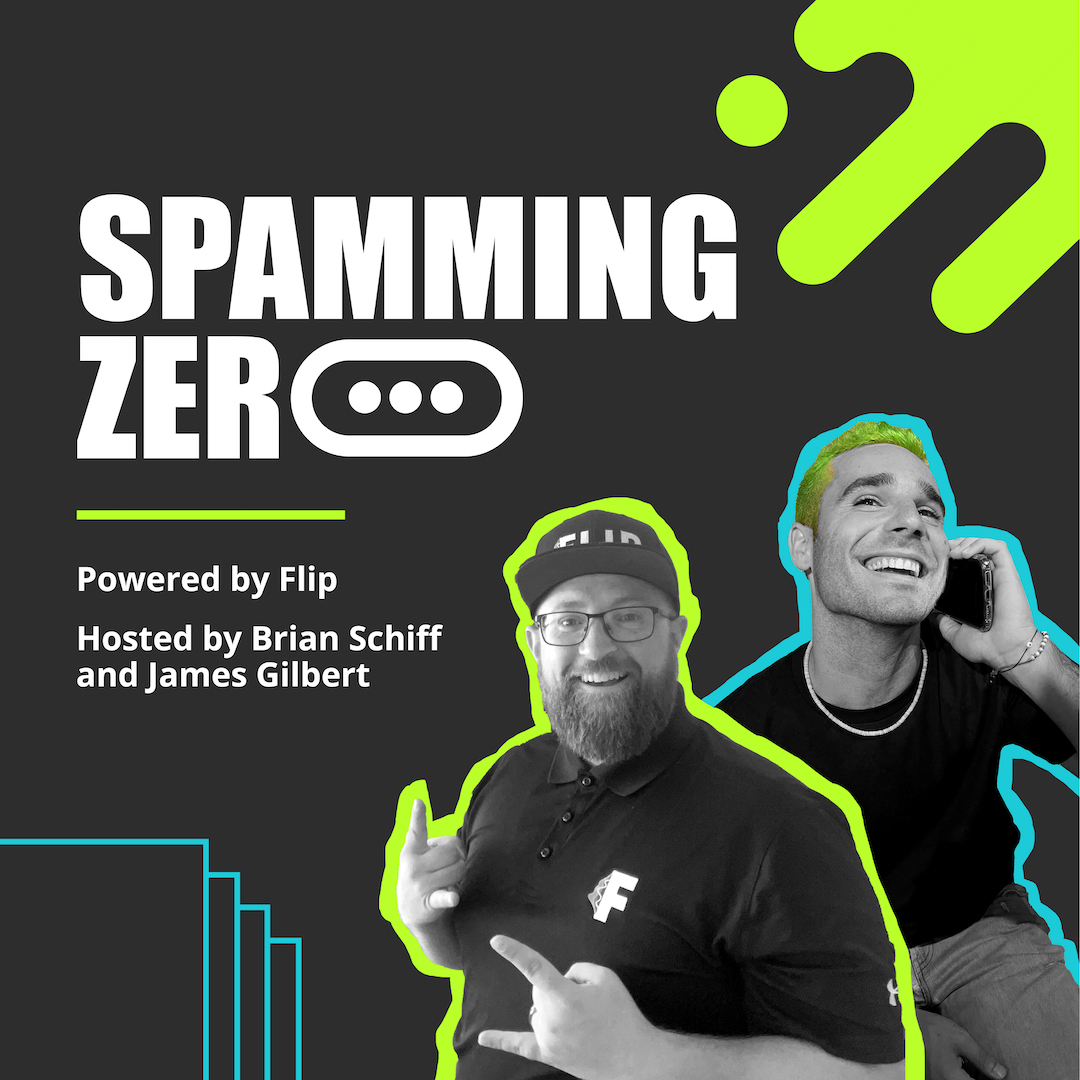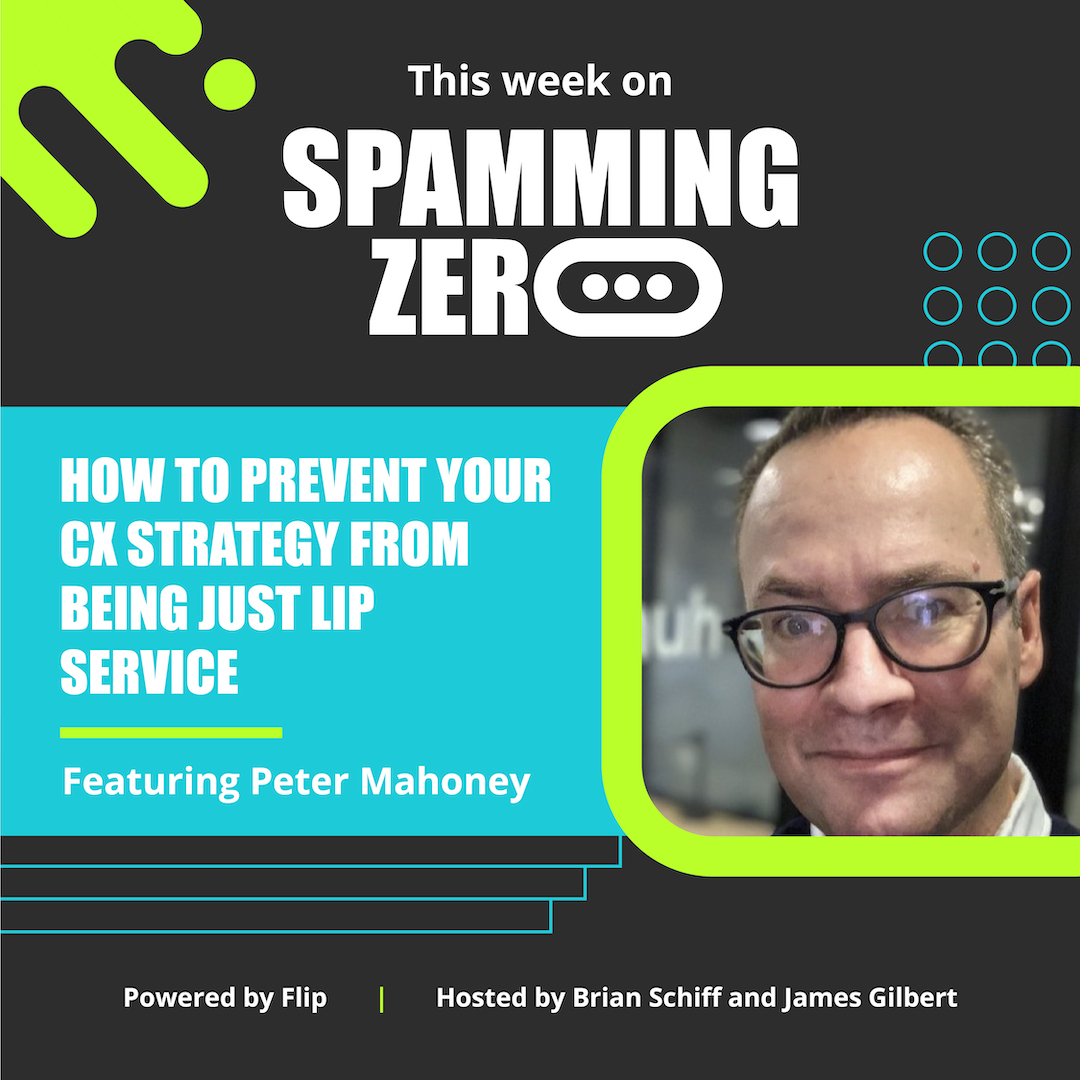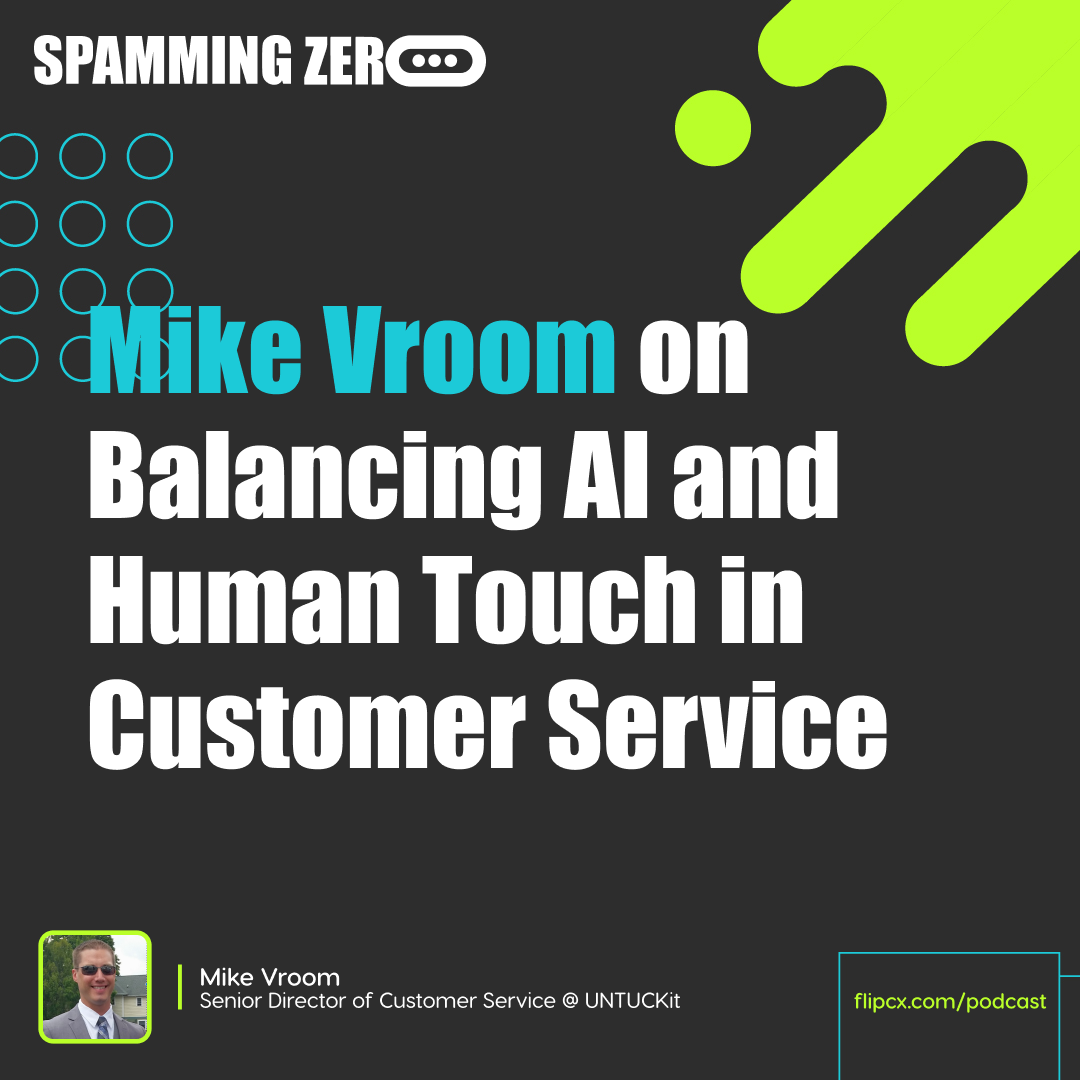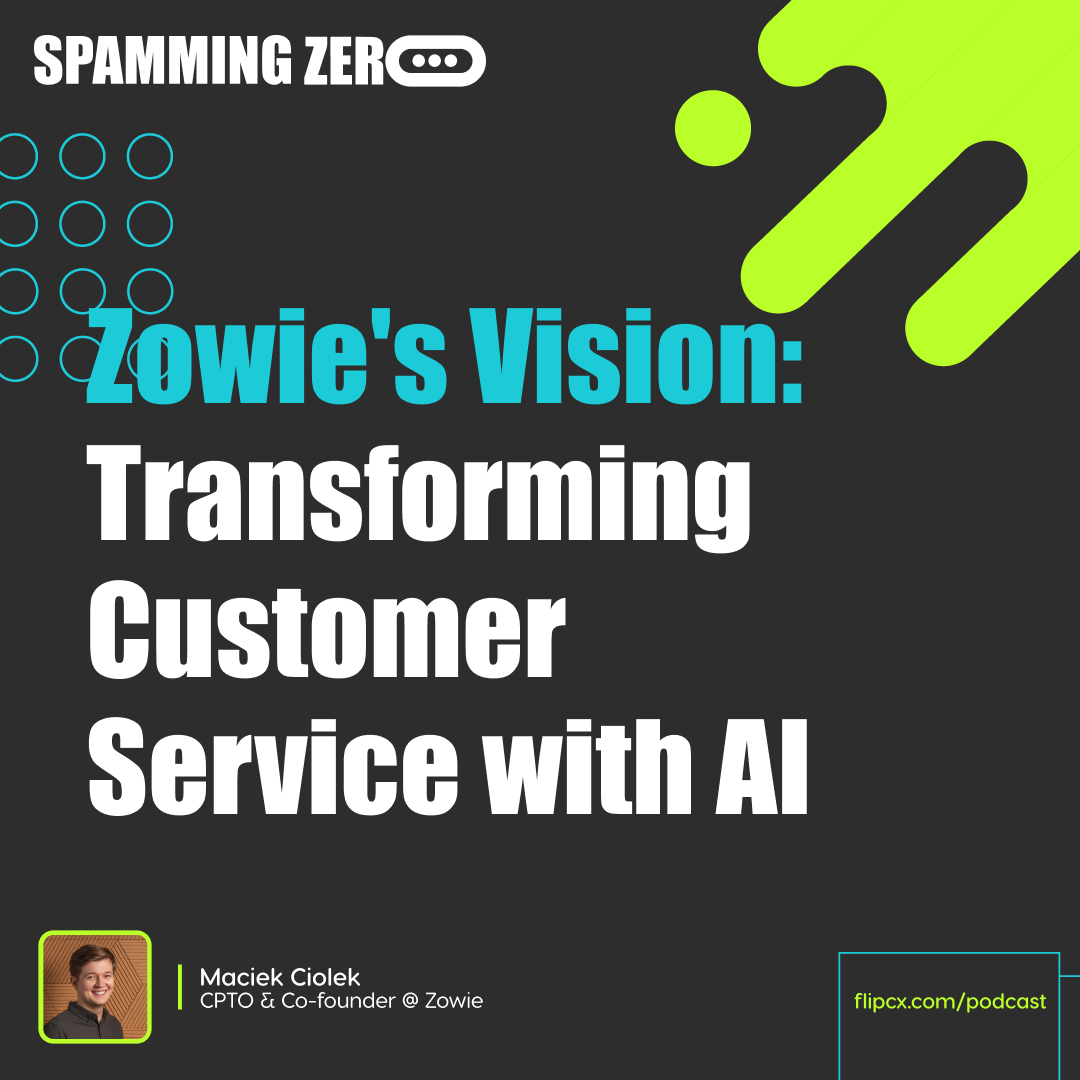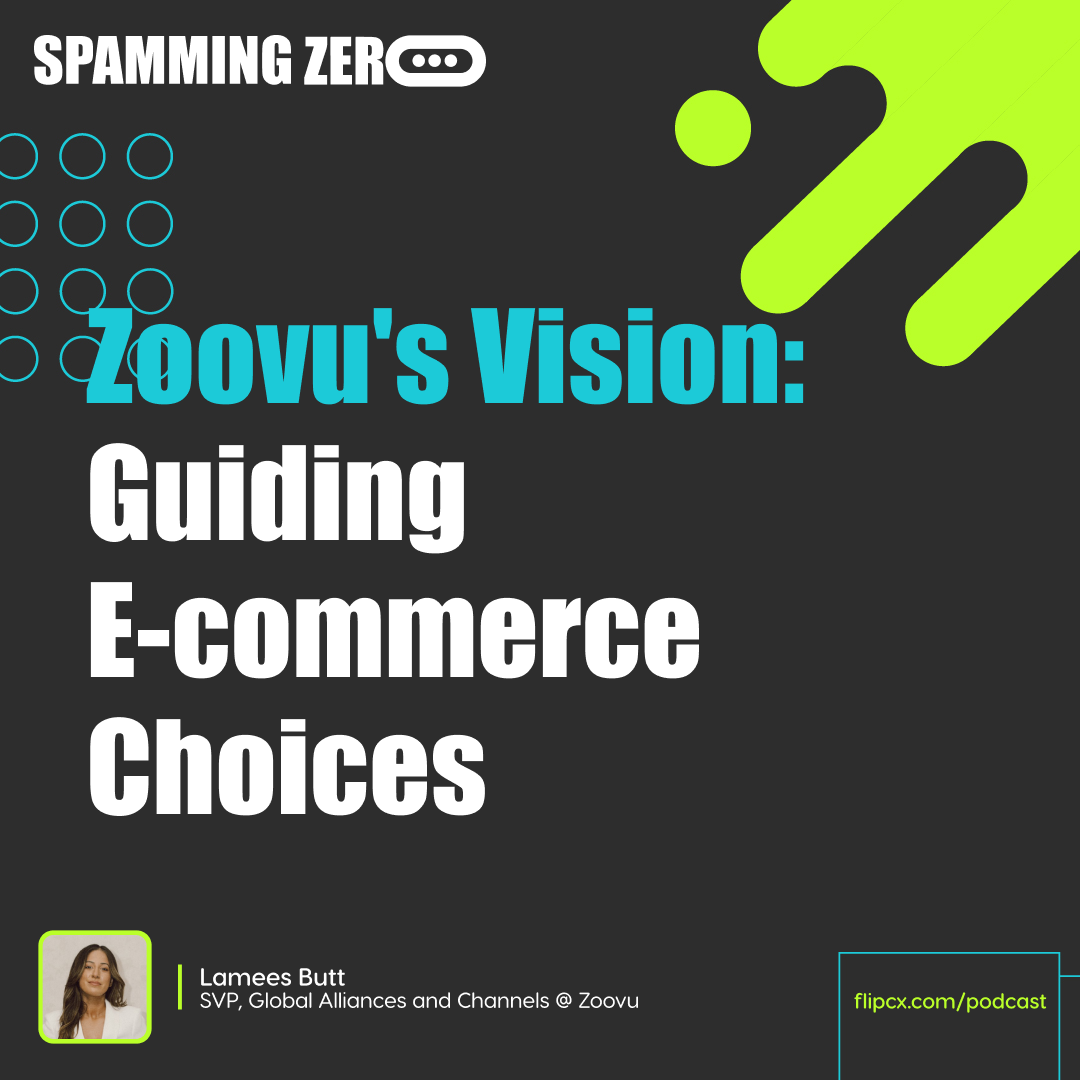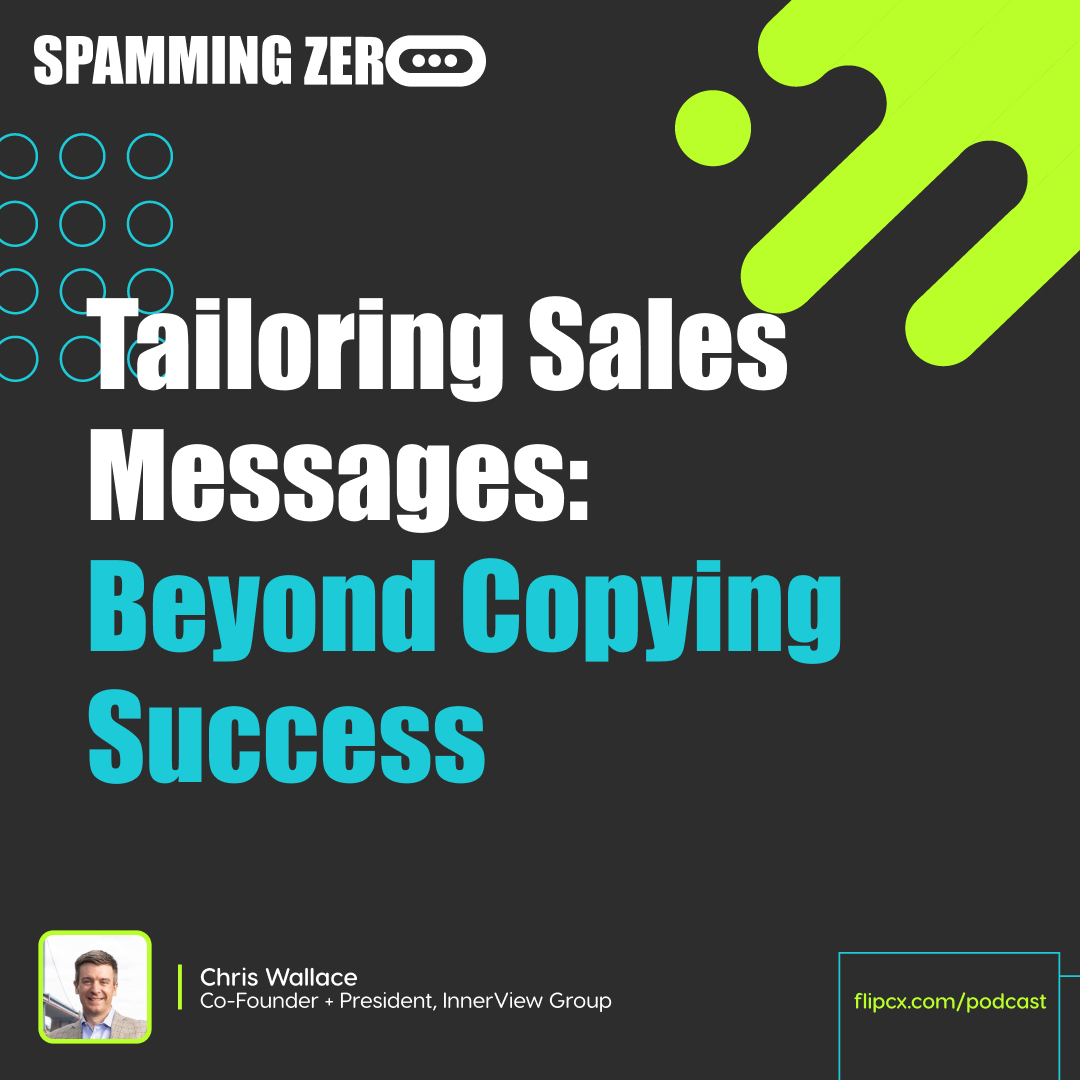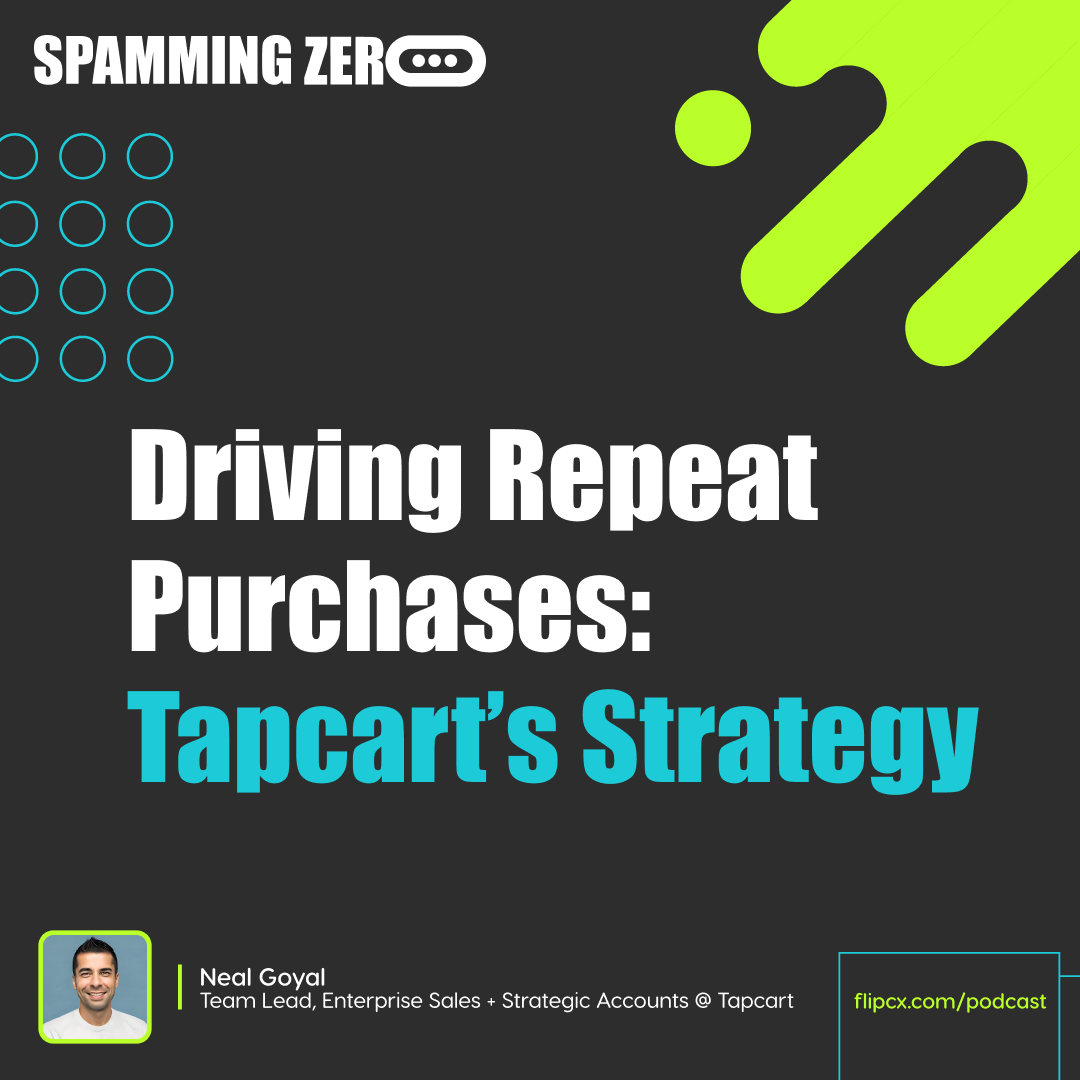Episode 10: How To Prevent Your CX Strategy From Being Just Lip Service
- 0.5
- 1
- 1.25
- 1.5
- 1.75
- 2
James: Hello, all of our listeners out there. Thank you for another episode of Spamming Zero. Today, we are going to be joined by a current CEO at Plannuh, Peter Mahoney. Peter, this is going to be awesome. We're going to be talking about how to prevent your CX strategy from just being lip service. But before we get into that topic, let me tell you a little bit about Plannuh. Plannuh is a budgeting platform for marketing leaders. I, myself, James, have used it. It is fantastic. It made my life so much easier, especially if you're an early stage startup and you don't necessarily have finance figured out, it makes it even better. I love it. It's intuitive. It's an easy way to track your budgets across diverse teams in your marketing org. That being said, we have another episode, and here we are live. I'm James.
Brian: And I'm Brian.
James: And this is Spamming Zero.
Brian: Thanks for joining us, Peter. Very excited to have you.
Peter Mahoney: Excited to be had, Brian. I can't wait for it.
Brian: Awesome. So kicking us off here. First question to get the ball rolling you yourself are of course, a podcast host who has launched a couple more episodes than I have, although I don't know. I guess you probably stack up similar to James on a career basis, but I got a question for you regarding hosting podcasts. How many episodes would you say it took you to get your groove, where you felt like you were delivering a smooth, enjoyable experience that was fulfilling the vision that you had for the podcast?
Peter Mahoney: Well, I think I'm still in transition to that full fulfillment, Brian, and we're 80 some odd episodes into the next CMO podcast, but I'd say to get to that first click, it probably took about 10 episodes to get there. And I've done a fair amount of interviewing people in the past, just in my past roles. So I was comfortable with the idea of interviewing someone, and I don't know, having a basic conversation, which is what most podcasts are, but it does take a little while to find your voice, to find the right approach to the podcast that is both authentic to you, and hopefully useful to your audience. And the one little known fact, I don't know if this is a little known or not, Brian is that about 10% of podcasts that I record, never see the light of day.
Brian: And what gets them on inaudible block?
Peter Mahoney: So, a lot of things can get there, but the key is just that you sometimes have a guest and it'll be interesting to see if mine makes the light a day, we'll see. Sometimes you have a guest, they may be an amazing person, they have a brilliant point of view, but for whatever reason, they're just not comfortable with a format. There's awkward in their answers. They try to be too scripted is the thing that I find is a real challenge for people. They try to parrot a bunch of sort of standard marketing messaging, or something like that instead of having a conversation. And you can tell, it takes about five minutes into the podcast and you try to guide and nudge them. But you can tell from the pretty early minutes of the podcast that this isn't going to go well, and it's never going to see a light a day. And it's actually one of the ways that I think it's important to try to maintain quality in a show is to just have some basic standards. And if for whatever reason it isn't working, it's no big deal. It's 30 or 40 minutes of someone's time and move on and do the next one.
James: I've actually never heard anyone do that.
Peter Mahoney: Yeah, it's interesting. I assume that more people do it can't be just me, but it does make a difference. And there are certainly there's some that I listen to after I go," Oh, that just, that just wasn't good at all." And it's usually people trying too hard and again, I think the format works really well on two ends of the pole. So one either it's very conversation, you're just having an honest dialogue with someone or on the other end, it's just a very highly produced scripted kind of that NPR style, news style, well written, crafted, produced kind of thing. In the middle things kind of break down in my mind.
James: All right. So let's dive into this topic then, that we think is going to be pretty useful for a lot of our listeners out there. Why did you feel like this topic needed to be talked about? Why are you passionate about this idea of customer experience, just being lip service?
Peter Mahoney: You probably have to understand a little bit about my background to understand why I care about this a fair amount. So before starting my current company Plannuh, I worked for a number of years, actually 13 years, for a company called Nuance. That was a leading provider of voice in AI technologies recently acquired by Microsoft. And in our early days, we were almost exclusively focused on what we thought of as voice service, or interactive self- service, or we called it different things at different times. And I saw a lot of bad things over my experience in the industry. And I saw people create some great experiences and some really terrible experiences, and it really put a... Shown a bright light on customer experience for me, just being, spending so much time in that industry. And it's one that I just care about a lot and can really... I really get excited about the concepts, because I've spent so much time thinking about it over the years.
James: Why do you think it's become lip service more than it has become like strategic initiatives that people are really executing on? It almost seems like it's... Well, there's a lot of things that could be lip service in business. This one in particular.
Peter Mahoney: Yeah, there are. And here's the problem. I think that customer experience is one of those things that, first of all, it's been elevated as a topic. So, people talk about customer experience, writ large, across all the different kinds of customer experience you have inside an organization. And if you think about it, just to set some context, customer experience can be calling someone on an interactive voice system. It can be going to a website. It can be showing up at a retail location. It can be interacting with a representative of your company in public, like at a trade show, all these things, and of course, interacting with your product, all those things are customer experience, and all of them in some add up to your perception of your experience with that brand over time. So, if you think about it, it's a very, very big thing that spans a lot of different departments of most companies. And the big challenge that people have is they like to stand on their pedestal and say," Customer experience is incredibly important", but it's very difficult to drive real accountability into customer experience, especially because the things that we just talked about, those different kinds of interaction, experiences, or channels as we'd call them, they often have different owners in a company, and it can't be a CEO job to be responsible. Certainly the CEO should be an advocate for the customer experience, but it's really about who owns this thing at the end of the day. And that causes a lot of problems in my mind, James, is that there are these battles between these fiefdoms around who should really own that customer experience over time. And is it worth it to invest more budget in one particular area of the business if that department in your company is being managed as a cost center, and really focused on saving money versus creating great experiences.
James: That was a mic drop right there. That last part, especially, because I here's the crazy thing about it. There are so many organizations that I see right now trying to do away with the idea of channels, right? There's no channels that exist anymore. It's just one cohesive experience. Well, I'm going to squash that for a second. As long as there are preferences of us as humans, there will be channels. It's not simple. Some of us are going to prefer a unique channel over another. And Brian and I have talked so much about this internally because we talk about like voice being a channel. And we talk about chat being a channel. And we talk about email being a channel and now text being a channel. And I am one who changed my entire financial world during the pandemic over to a particular credit union, simply because they met me in my channel of preference. I think channel, it's very underutilized and it's now being muddied with so much... Like people are trying to get rid of it because I think they can't figure out how to tackle it. And so, oh, what's the easiest thing for us, to do is to get rid of the channel altogether.
Peter Mahoney: I had a really interesting personal experience with that when I was running a business inside Nuance. So I ran their consumer oriented business, the Dragon voice recognition, they sold to individual users and consumers and things like that. And at the time when I started, I think it was about 2007, or eight, I started working on running that business. It was sort of a, almost a forgotten part of the company. Interestingly, it had been really, it's been massively invested in since then, but it was sort of set to the side largely because it was a go to market motion that the company wasn't familiar with, because most of the stuff the company sold was sold to enterprises. It wasn't sold to individual users. And there was a big effort to try to do exactly what you were saying, James. It was about squashing channels and basically closing doors. And the first thing that I did to much to the objection of some of the executives around me is I just started opening doors. I said, well, let's, for instance, they didn't want any social media presence back in 2008 where it wasn't used as much as it is today. They didn't want it to have a Twitter channel. I'm like," Well, why not?"" Well, people will call us or contact us there."" So, what?" Okay. Then if we want to get the input, and get people to meet us there and get us to get them to interact. And of course in the first three to six months, we got a big rash because people hadn't been able to reach us. We were like this, this fortress of solitude and we didn't open any of the doors. So the first thing we did is we swung open all the doors and then we scrambled to try to do our best, to respond to people in the channels that they were interacting in. And it was a little bumpy. I don't know if it was the best decision to just do it that way, but I did it that way. But on the other end of that, we had a dramatically improved customer experience for those end customers, because we just changed a fundamental policy about opening channels versus shutting down channels.
Brian: I love that approach, because it allows the customers themselves to dictate the channels that become priorities, right? So, often you see new company starts growing, they start to stand up their service, customer service team, CX org, and the person that's running that team almost has a roadmap around when they're going to turn on different channels. And it's like their prerogative, and something that I don't want to say, they're pulling it out of thin air, but it's certainly not. What you're saying is we're going to open everything and it's going to be a little bit of chaos because obviously we can't support everything. We're not going to have all the infrastructure for it, whatever. But at least we're going to get the signals around what are the channels that people like to use. And then I'm sure the next step for you guys at that point to, I guess, weather the storm and start to build a great experience was okay, we're seeing the most volume here. What are the low hanging fruit, the quick wins, the big things over time that we need to do to now thrive in this channel?
Peter Mahoney: That's exactly right, Brian. So, the first step is listening. So opening up the door and seeing who comes in and see what they say. And we got an amazing amount of feedback from people. And a lot of it was negative, by the way. And a lot of it was initially, like" I've been trying to reach you people and I get this support black hole", because again, we back then really considered support to be a cost center. And it's really changed since then, pretty significantly. So we got a lot of that, but then you got the second level stuff. You started to hear the other issues, and concerns, and complaints and frankly, ideas that people had, because people had great ideas about how they were using your products. And one of the other tricks that I used myself and I love data, data's amazing to get, and it's great to open up all these things and find out if you can organize data. But what's really important at the same time, is actually having that one to one listening kind of opportunity. So one of the things I would always do is, periodically, I would respond to sport tickets myself, or I would sit on the phone and take calls or I would go onto our Twitter account, and make responses to the messages that were out there. And it's a way to engage with the end customer in a way, and get a really, really high fidelity signal from what they're thinking in any given time. And you get much, much more than you would get if you just saw a synthesized report of some data points by having a high bandwidth, real conversation with a real user.
James: I think that is a fundamental way in which you can turn your customer experience strategy into not being lip service. I am telling you right now, the majority of brands out there do not do what Peter just did. So, if you just do that one little thing to me, that's exactly what we're talking about, which is flipping the script on that and changing something that is supposed to be a very fundamental strategy, a very strong business driver to something that is no longer going to be lip service. And I love the fact that you're talking about, like Brian mentioned the word chaos, this whole idea of like opening up a bunch of things to have chaos, right? It's turning chaos into beauty. And that's what's so interesting about all of this is like in order to glean minute details from customers, one, you brought up the framework of listening to them. That's a given, but two, it is opening up those channels so that it is a little bit chaotic for you. Of course, it's going to be hard to manage all those inquiries, and you're going to have to sift through the ones that are either just negative responses that are coming in and turn them into positive. But I think that fundamentally you can turn your customer experience strategy very easily into actionable things by just opening up the channels and allowing a little chaos so that I can turn into something beautiful. And that's, I think exactly what you did.
Peter Mahoney: It is, but very important, what you can't do is let the chaos continue into perpetual entropy. You need to make sure that there's actually an orchestration of this data in this experience over time. So you can start by getting some data and opening things up, and getting a sense for what's going on, but then what are you going to do about it? And the biggest challenge that I found we had anyway, when we opened up all these channels, was managing the customer's expectation around what we should know about them when they contacted us in one channel versus the other. To us, it was all one company, whether they sent us an email, got us on the phone, we're on our website, we're on a social media channel. It was all the same kind of inter... It was the same company, but we'd often have zero context for what was going on. So this person comes in, and maybe they come in and talk to a salesperson because the salesperson is the person who happened to answer a phone, because they call the main number at the office and they say," Great, I'm going to sell this person something." And they get this long diatribe from this customer, who's been complaining about something and not getting a response. So, having this ability to ultimately understand what these touch points, these interactions are across these channels and coordinate them over time with at least some basic data. And you don't have to be perfect, but you need to have some way to be able to say," All right, I need whether it's connection to my CRM, and sort of a universal connector or record locator, something like that." So at least I can figure out who is this person, to the best of the ability in that particular channel? So if you're talking about a high knowledge channel, like an agent, as an example, they should have access to lots of different information. Automation tends to be slightly smaller because they're going to have a very specific domain that they can operate in. So maybe they don't know everything, but they need some contextual clues to make sure that they're having an appropriate conversation.
James: So you brought up a great point. Automation works two ways. And I wanted to talk a little bit about how automation can make this a little bit easier for people because, to your point, to make sure that the chaos doesn't get out of hand, I think that naturally me being a data nerd too, you have to start correlating the data points so that you can create repeatable processes and you can actually create automation against it. And automation is two way. And I think so often when we think of customer experience, we think of automation in the form of the customer, but there's also automation in the form of the business process, right? And you kind of hit on some of this, like the connection to the CRM and those simple little things should be happening, right? The sort of activation of the data across departments. It is like one of the biggest painful things that I hear about in organizations when I, or when I call a phone number and Brian knows about this example. I have to give my personal information that is, for lack of a better way of putting it, I don't ever want to give that information over the phone, period. Let alone having to give it to not just one, but like five, six different departments when I get passed on, from passed on, and passed on, is a fundamental problem. It's a security issue. So it's a risk and an opportunity risk that you have as a business to fix. So especially with all these data breaches out there that can happen, like every single touch point that you have, that you're not feeding that data to a different department is an opportunity that you're providing a risk where it can go south very quickly. And I think so often we don't think of the ability to automate as a way to actually solve some of that problem.
Peter Mahoney: It's exactly right, James. And I know that in many of the projects I was involved in back in the day back in the late 2000 aughts, as an example, when we started doing a lot of automation for giant banks, and airlines, and people like this, the big challenge is they had this byzantine set of legacy systems, and thousands of individual applications that were completely disconnected. And if you wanted to figure out how to get an agent to take the information from one system, and put it in the other, I can't tell you how many times people would either have a notepad app sitting on their desktop or maybe a piece of paper or a sticky or something like that. And they're literally writing down or they used to anyway, write down PII, personally identifiable information, so that they can pass that to the next system because there was no technical integration. So they needed humans in a lot of case to bridge the world. And that's the kind of thing, it can be a very, very long tail problem when you are a large complex organization, as an example. This is where smaller organizations have an opportunity. If you're a mid- size organization, you probably don't have thousands of applications that you're dealing with for your internal systems. You might have dozens, and you probably do at least, but it's an easier problem to solve, especially if you're a more recent tenure kind of company. Maybe you have more up to date systems or you've gone through enough time that you've actually completely updated your infrastructure. And if you do have more contemporary systems and hopefully fewer and more integrated ones, then you can really make those experiences sing. But it's difficult work to do when you're dealing with, in a lot of cases, incompatible systems from different vendors, custom systems in a lot of cases, and transferring information from one to the other, which seems like it should be trivial from the customer experience side can be an extremely difficult and very, very expensive thing to do on the enterprise side.
Brian: One of the things that we talk about is the idea that our product is only as good as the data that we have access to. And it is the same thing that you're talking about. And you and I, when, when we first met Peter, part of what was so interesting was, I consider Nuance almost like the godfather of this category, right? In a lot of ways, providing the same thing in like to doing it in the last generation sort of way. And when I think about what's changed now, and what are the things that we are lucky enough that the world has evolved, and we have access to that weren't around 15 years ago. The first one that people draw to is the actual change in like the underlying voice technology, right? And everything that's happened there and the ability to understand people, and better sounding voices, and all of that stuff on the AI side. But the other piece of it to me that is absolutely like you wouldn't be able to... Our product wouldn't work the way it does, and these experiences could not be as good as they are and are going to be is the evolution of the backend systems, and of these mass market plot as market platforms that are holding all of the data that the agents need to access. And thus also that the automation be it in the voice channel, or in a chat bot app operating in live chat or email, like you're only as good as the data that you have access to. And that transition in the systems. And I think that you're right, it can be older companies that have evolved, but so often what you really see is, it's newer companies. And it's companies in verticals that are very tech forward. So, e- commerce is obviously near, and dear to us. But yeah, I couldn't agree more with all of that.
Peter Mahoney: I think there are a couple of considerations in that general area of thinking Brian, that are important to explore. And one way to think about it is if you are some czar of customer experience across an organization, as an example. You probably want to parade out the touchpoint that you have and you prioritize them. You say, okay, if I have 20 touchpoint as an example, how many of these systems and applications and touchpoint am I going to integrate? You're you're going to stack rank them. And one of the things that helps you get to more of the items on that list is what you were just talking about, Brian. If you have contemporary systems up to date, open APIs, things like that. That's a good starting point and a prerequisite in most cases, to be able to start to knock down some of these applications. The other thing is something that I know you all embrace in your business is more of a low code approach. And the idea of not only having these things available, but having the ability to really, really rapidly develop these applications, because the reality is that it might be not a super high volume kind of application. Maybe it's the kind of application that historically wouldn't have been cost justified to do this work. And that's what the exciting part is because if you can drive down the total cost of that kind of implementation, which means you not only the technology has gotten better and easier, but it's also dramatically easier to actually deploy, create and deploy and manage these applications. So if you add something new to your business, you can just add something. And that kind of thing we used to take down million dollar contracts in big companies all the time to do all the professional services. And that was great business. And they still have a great business there obviously, but what is really going to open up the market and really transform broadly, these kind of customer experiences is the much more rapid, easier ability to develop and manage these kinds of customer experience and voice experience kind of applications, especially because then you'll get to more of these applications, much, much faster.
James: Peter, naturally, with all of our conversations that we have on this podcast, we always like to make it a little bit more human, make our guests seem a little bit more human because they might seem kind of like famous and you're famous in your own in your own ways. And so one of the ways that we like to do that is we like to ask the last couple of questions to be very unconventional, which is on brand to what we bring here. Tell us about an experience that you've had in your life that has left vivid memories for you.
Peter Mahoney: Boy, there are a lot of them, that I have, and it's funny. I'm going to talk because of the channel. I'm going to talk about an experience that I had, that was a customer experience thing. I was going through a ton of back pain. I was really suffering because I've been sitting in my same pandemic office at home for the last two years, long story short, my primary care physician said," Hey, you should make an appointment with this physical therapy office, and they'll take care of it." And I had the worst experience I could imagine trying to schedule in the middle of pain, trying to schedule an appointment that my doctor said," Just go here." I had this social proof. I had the doctor, someone I trusted saying," Hey, this is a great thing to go to." So I go to their website and they say," Great, just book the appointment here." I go, and I book the appointment, it gives me a confirmation and it says," We're going to confirm a day before", or something like that. They never confirmed. I call the office, it rings, and rings, and rings. And then eventually it says, leave a message. I leave a message and I hear nothing back. So, I just, on the day of my appointment, I decided I'm going to go walk down and just go to my appointment. Of course, I get there, and there's a big sign on the office that says this office is closed due to COVID precautions. And the website allowed me to book an appointment. The voice system allowed me, told me, that I should expect to be there, and what I needed to bring, and all this stuff. And of course, somewhere in the background, someone didn't turn a couple of things off. They didn't uncheck that box on the system that said that," Hey, this particular location", because they're a big national chain. This location, you can still book time for. So, what did I do? I did what I hoped someone would've done to me in this position. I reached out to the COO of the company and I sent him a note. I connected with him on LinkedIn and said," Hey, I just want you to know that this is going on", because people used to do that to me all the time. And I actually really, really appreciated it. And it was great because he immediately got back to me like within 20 minutes and said," Thank you so much. I really appreciate it. This is what we're going to do about it." And he was really specific about it. The next day I had a call from one of their open offices, they apologized, they scheduled my PT. My back is now feeling much better. I had a great experience. So, it was a terrible experience where a little bit of human interaction, and listening to the customers in a very simple way, when a problem was escalated, allowed them to take someone who probably would've been a major detractors for this brand into someone who's going to be, hopefully I won't have to be a repeat customer, but if I do need more PT, that's probably a place I go.
James: Flipping customer experience. I love it. Peter, I have one more question for you. This one is a little bit more serious.
Brian: Oh, no.
James: So here we go.
Peter Mahoney: I'm worried
James: The world needs nuggets of wisdom from leaders like yourself. If you could give the world one thing that you think they need to focus on to help make change for the positive, what would it be?
Peter Mahoney: Simplicity. So, I think people over complicate everything, and I think it's incredibly important for people to just take some action, and whatever it is, whether it's their work, their personal life, just take some simple first steps, and some action, and not spend six months analyzing, and getting analysis paralysis, and trying to figure out what the data says. The best thing to do is go talk to a customer, pick up the phone, try something new, open up a channel, call that person you haven't called or whatever it is, do something simple. Take a step, a simple step. And it's better than thinking about it for six months and doing nothing.
James: Thank you so much for joining us on Spamming Zero, Peter.
Peter Mahoney: Great. It's awesome to be here. Thanks James. Thanks Brian. And look forward to hearing this in the wild.
James: If you haven't subscribed to our podcast Spamming Zero, please do so. We'd love to hear from you also, if you have any topics that you would like to address on the podcast itself, reach out to Brian or Ivy at LinkedIn, and we would be happy to hear from you. Thanks again to all of our listeners out there. We will see you next week.
DESCRIPTION
Not a fan of uncomfortable questions? Sorry, Charlie. Sometimes you gotta’ dive in to make a difference, so—ready or not—here it comes… Is your CX just lip service? Because, if so, you’re doing you, your customers, and your entire org a massive disservice.
Not to worry, we’re bringing you some fantastic advice on this very subject from one of the best in the biz.
Peter Mahoney, CEO at Plannuh sits down with James Gilbert and Brian Schiff to offer top tips on preventing your CX strategy from being just talk. This week, on RedRoute’s Spamming Zero Podcast.
What’s Covered?
- Why Peter is so passionate about this topic
- How lip service came to compete with strategic initiatives in the first place
- The importance of channels (and people’s preferences around them)
- How automation can help
- Some personal experiences that have left an impact on Peter
- Changing the world (yes, really)
- And more
Ready for more fantastic Spamming Zero conversations ahead? Listen, rate, and subscribe on Casted, Apple Podcast, or Google podcasts.
Today's Host
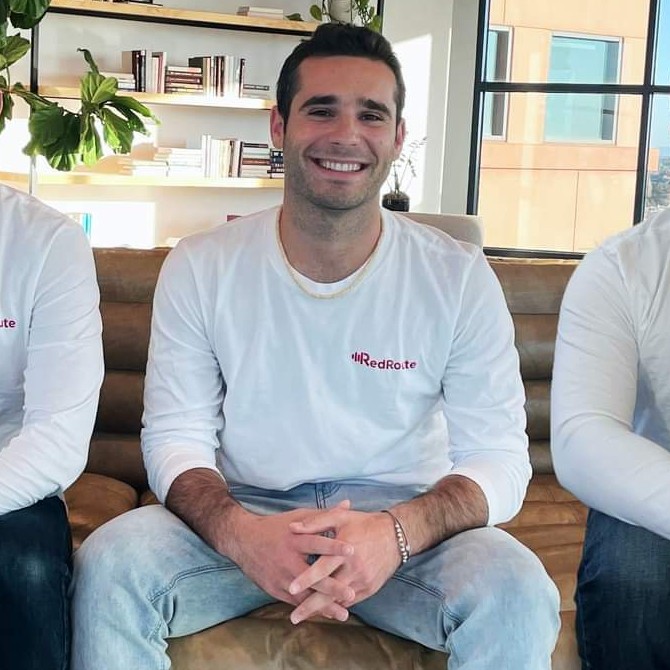
Brian Schiff
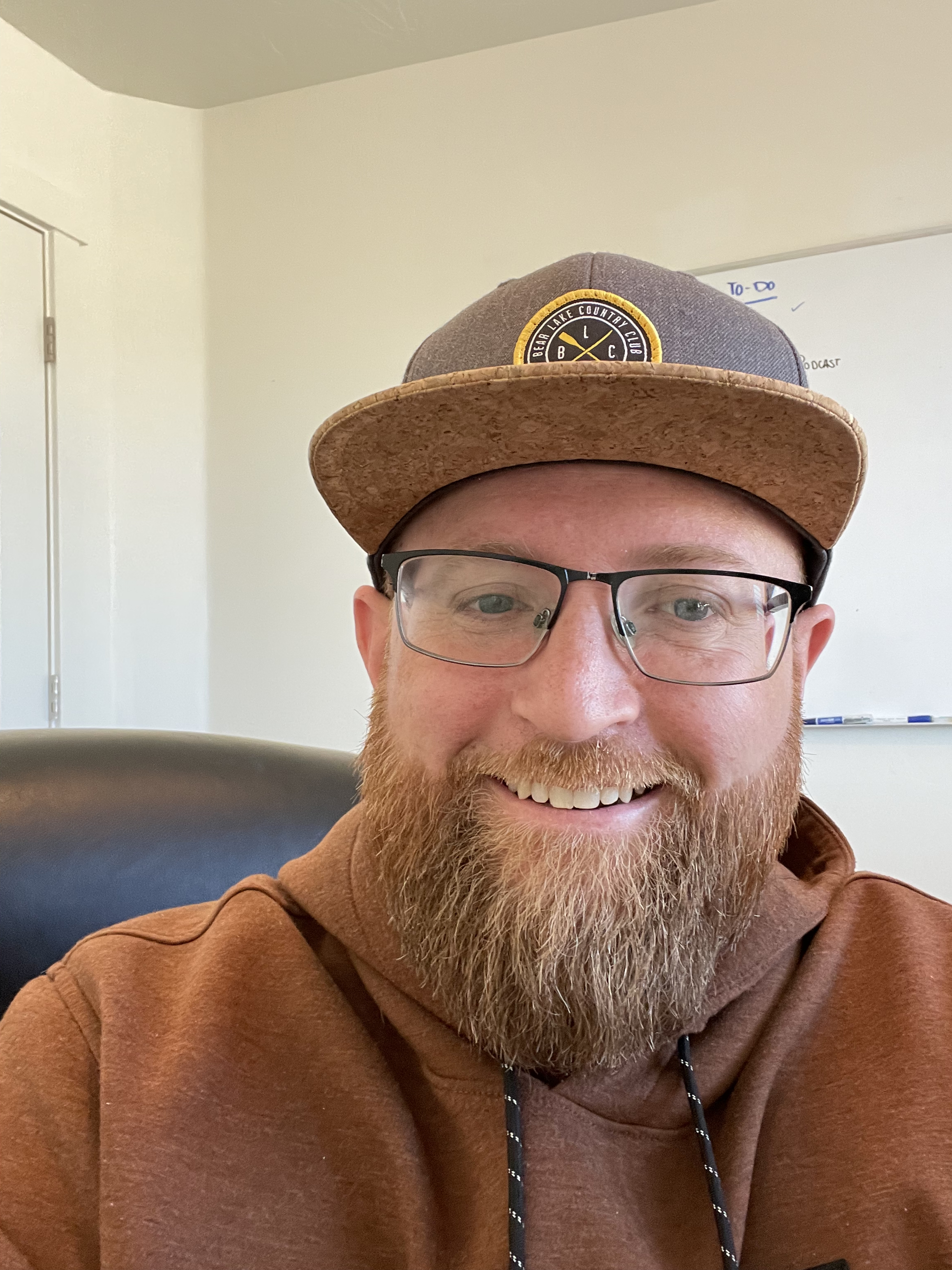
James Gilbert
Today's Guests

